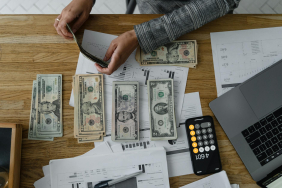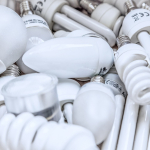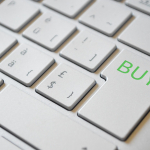If you’re finding it tough to set aside money and feel like you’re just saving paycheck to paycheck, know that you’re not alone. Many people struggle with this challenge, especially when income feels low. However, building an emergency fund plan is not only possible but essential for your financial resilience. You might think that budgeting on a small income means forgoing savings entirely, but with some practical strategies, you can create pathways to success. Start with a small goal, embrace the 50/30/20 budget rule, and consider picking up a side gig to boost your savings. Implementing these methods will help you learn how to live frugally while securing your financial future, one step at a time, even in the face of uncertainty.
Tip: Start with a Small Goal
When you’re saving paycheck to paycheck, the thought of building an emergency fund can feel overwhelming. Rather than diving into massive savings targets, it’s crucial to start with a small goal. Setting manageable targets makes saving more achievable and less intimidating.
Begin by determining a realistic amount to set aside, such as $500 or even $100—whatever feels doable based on your current financial situation. This initial goal provides a sense of accomplishment when reached, motivating you to continue.
Here’s how you can break it down:
| Step | Action |
|---|---|
| Assess Your Cash Flow | Identify a specific dollar amount you can save monthly without putting stress on your budget. |
| Set a Time Frame | Decide when you want to achieve your small goal—perhaps within three months. |
| Automate Savings | Consider setting up an automatic transfer to a separate savings account each payday. This method ensures that saving becomes a non-negotiable priority, smoothing your journey toward your financial goals. |
With steady commitment to this small target, you can gradually build up your emergency fund. Every dollar counts, especially when you’re budgeting on a small income. You will not only bolster your financial resilience but also develop the habit of saving, setting you up for further success down the line. Over time, as you get accustomed to this saving routine, you can adjust your target upward, steadily growing your low income savings into a substantial emergency fund. Remember, a solid foundation begins with small steps.

Strategy: Follow a 50/30/20 Budget Rule
Implementing the 50/30/20 budget rule can be a transformative strategy when you’re saving paycheck to paycheck. This budgeting method simplifies the allocation of your income into three clear categories: needs, wants, and savings. By adhering to this structure, you can effectively manage your spending and prioritize your financial goals, such as building an emergency fund.
Breaking Down the 50/30/20 Rule
| Category | Percentage | Description |
|---|---|---|
| Needs | 50% | Essential expenses such as housing, utilities, and groceries. These are non-negotiable costs that you must cover each month. |
| Wants | 30% | Non-essential expenses like dining out, entertainment, and vacations. It’s important to enjoy life while being mindful of your spending. |
| Savings | 20% | This portion is allocated for savings, including your emergency fund. Prioritize this to enhance your financial resilience. |
How to Implement the 50/30/20 Rule
- Calculate Your Income: Start with your net income—the amount you take home after taxes. Knowing this figure is essential for accurate budgeting.
- Assess Your Expenses: Track your monthly spending for at least a month to identify your needs and wants. This exercise may reveal areas where you can cut back.
- Allocate According to the Rule: Once you’ve identified your spending patterns, divide your income into the three categories. Focus on keeping your needs at or below 50%, your wants at 30%, and aim for that crucial 20% in savings.
- Adjust as Necessary: Given that you’re likely on a low income savings plan, if sticking precisely to this breakdown proves challenging, make adjustments. For instance, if your needs exceed 50%, identify wants you can temporarily eliminate.
By following the 50/30/20 budget rule, you can create a realistic framework that allows you to live frugally while steadily building your emergency fund. As you adjust your spending habits, you might find that even small amounts saved can add up over time, alleviating some of the stress associated with living paycheck to paycheck. This approach empowers you to make informed decisions, ultimately leading to greater financial stability.
Solution: Pick Up a Side Gig
If you feel like you’re in a tight spot while saving paycheck to paycheck, a side gig can be a powerful solution. Imagine turning your skills and hobbies into a supplementary income stream that not only eases financial stress but also helps you build your emergency fund plan. The best part? This doesn’t have to be a monumental commitment; even a few hours weekly can yield significant results.
Explore Your Options
First, consider what skills you possess. Can you write, cook, or design? Online platforms like Fiverr or Upwork let you offer services based on your expertise. If you have a knack for art, consider selling handmade crafts on Etsy. Alternatively, riding-sharing services or food delivery apps can provide flexible hours if you prefer a quick hustle.
| Side Gig Options | Potential Earnings (Per Hour) | Flexibility |
|---|---|---|
| Freelancing (Writing) | $20 – $150 | High |
| Ride-sharing (Uber/Lyft) | $15 – $25 | Moderate to High |
| Delivery (DoorDash) | $10 – $20 | Moderate to High |
| Online Tutoring | $15 – $50 | High |
| Pet Sitting/Dog Walking | $15 – $30 | High |
Time Management is Key
Once you settle on a side gig, time management becomes essential. Identify your current commitments and carve out time during evenings or weekends. Make sure you balance this with your personal life to avoid burnout. The goal is to boost your income without overwhelming yourself—being strategic will help you focus on budgeting on small income effectively.
Reinvest Your Earnings
As you start earning extra money, prioritize setting these funds aside. Whether you allocate a portion directly into a high-yield savings account or designate a specific category in your budget for emergency savings, this can significantly increase your financial resilience. Even small contributions, like $50 to $100 a month, can accumulate over time.
By leveraging a side gig, you’re not just making ends meet; you’re actively building a safety net. This proactive approach can reduce dependency on credit and prepare you to face unforeseen expenses without the stress of falling back into the paycheck-to-paycheck cycle. So, dive into a side hustle and take control of your financial future today!
Frequently Asked Questions
How can I build an emergency fund if I am living paycheck to paycheck?
Building an emergency fund while living paycheck to paycheck can seem daunting, but it is indeed achievable. Start by setting a modest savings goal, even if it’s just $20 or $50 per paycheck. This gradual approach allows you to save without straining your budget. Consider using a separate savings account so you are less tempted to dip into it. Additionally, automate your savings by setting up an automatic transfer from your checking account to your savings account on payday. This way, you prioritize savings as an essential expense, just like rent or groceries, ensuring you consistently build your fund over time.
What amount should I aim to have in my emergency fund?
Aiming for an emergency fund that covers three to six months’ worth of essential expenses is widely recommended. However, if you’re currently living paycheck to paycheck, this might feel overwhelming. Instead, focus on building a smaller initial fund of $500 to $1,000. This amount can act as a buffer for unexpected expenses like medical bills or car repairs. Once you feel comfortable, you can gradually increase your goal to reach a more comprehensive amount that allows you to weather larger financial emergencies without going back into debt.
What expenses should my emergency fund cover?
Your emergency fund should be designed to cover essential, unplanned expenses that could disrupt your financial stability. These typically include costs related to unexpected medical emergencies, urgent home repairs, car breakdowns, or sudden job loss that would impede your ability to pay regular bills. Instead of using credit cards for these situations, having a dedicated emergency fund can prevent you from spiraling deeper into debt, ensuring that you have the liquidity necessary to handle such challenges without financial stress.














Comments are closed.